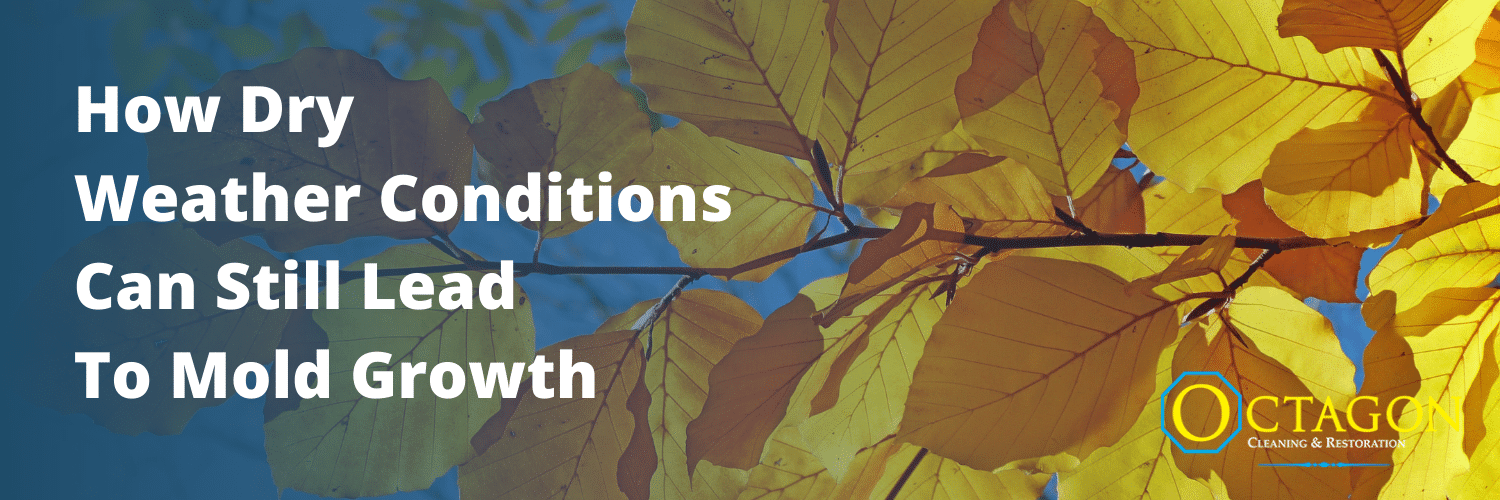
Great question, as many of us think that in the colder, dryer months of the year, we have less to worry about when it comes to mold growth. Well, we may be right when we are talking about outside of the home. Mold growth indoors can be a much bigger issue. Before we begin going over how we can have mold growing inside during colder, dryer conditions outside, I would like to discuss what causes mold to grow. Mold grows best when heat, moisture, and food sources are present. These conditions are available in many homes year-round.
How does mold get into a home?
Mold is present in every environment and spreads via microscopic spores that float in the air. Once mold spores enter an environment that contains the ideal growing conditions lands on a surface, it will begin growing and spreading. While we have these conditions available year-round, it is necessary to understand how each of these conditions can create an environment that supports mold growth. We will begin by explaining how these conditions get inside the home.
What do we do to our homes just before winter?
We get our homes ready for the season. We begin by closing our windows and doors, adding more insulation, sealing up cracks and crevices, and turning on our heating system. Now that we made our homes weather tight, we have also made it harder for our homes to breathe, therefore trapping the moisture inside our home, creating the groundwork to promote and support mold growth.
How does moisture get in our homes if it is dry outside?
Moisture enters our homes in many ways, some of which may surprise you. Some sources include leaking pipes, damaged caulking, roof leaks, cooking, bathing, heating, humidifiers, breathing, sweating, moisture escaping from dirt floor basements, condensation, etc. Most of these sources are from just living in our homes. Once this moisture gets trapped inside, it will build up in the air creating the second condition vital in promoting and supporting mold growth. While it is necessary to have some moisture in our homes to keep us healthy and feeling good, too much becomes a problem and can lead to musty odors, damage to building materials, and mold growth.
What kinds of foods are required for mold to grow?
Mold will only grow on organic materials. Some examples include paper, wood, dust, furniture, decaying leaves, dirt, etc.
How do I prevent mold from growing inside my home?
To prevent mold from growing indoors, we will need to create a clean, dry, healthy environment. While it is impossible to make a home mold-free, keeping it clean and dry will significantly reduce the chances for mold growth at bay. Heat is a primary source but is impossible to control because mold grows best between sixty and eighty degrees. These are the same temperatures that we need to feel comfortable inside our homes. We have a little more control over the moisture and food sources as these are the more easily controllable conditions indoors. Moisture comes in many forms and presents several ways humidity, liquid water, and condensation. The ideal humidity level indoors is between thirty and fifty percent. Humidity levels of sixty percent or more create the conditions for mold to grow. Below are a few ways to remove the different types of moisture sources from indoors.
Moisture:
- Inspect the ventilation in the attic to make sure that excess moisture can escape
- Inspecting plumbing system for leaking pipes or fixtures
- Inspecting appliances to ensure they are free of leaks.
- Checking your foundation to make sure that water is not coming inside.
- Checking the flashing on your roofing and decks.
- Inspecting the caulking around your sinks and shower and toilets
- Having a humidistat to monitor the humidity level in the home.
- Utilizing a dehumidifier when humidity rises above fifty percent.
- Opening the windows on a nice dry day
- Using exhaust fans when cooking and showering
Food sources:
- Regularly dust and vacuum
- If you have a dirt floor basement, install a moisture barrier
- Dispose of trash excess papers
- Dispose of spoiled foods
- Keep perishable foods in the refrigerator
Mold is necessary for nature to break down organic materials. It can be a nuisance when indoors. Even during the colder, dryer outdoor conditions, mold growth can thrive indoors. Keeping your home clean and dry throughout the year prevents mold issues before they start.

